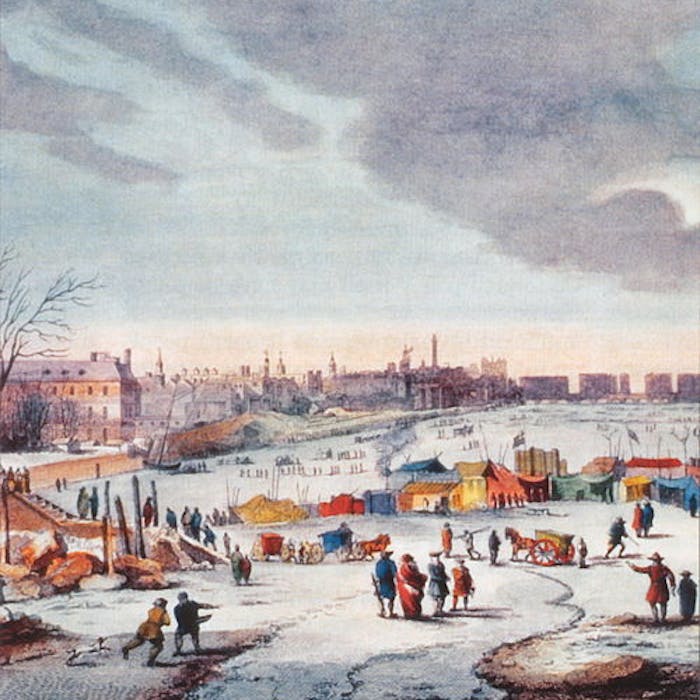
The Little Ice Age - when the Thames froze over
The Little Ice Age was a period of cooling that meant more severe winters happened in Britain between 500 and 250 years ago. The climate occurred in the Northern Hemisphere from the 1400s to about 1850 after the Medieval Warm Period.
In Britain, remembrance of this period is captured most vividly in paintings of the frost fairs that happened on the Thames, and early Victorian tales of harsh winters.
During the preceding Medieval Warm period, wine grapes were grown in England. But from the Tudor times onwards, paintings, literature and contemporary accounts, depict winter clothing becoming much heavier and the frost fairs being held on frozen rivers like the Thames.
Between 1607 and 1814 there were a total of seven major such fairs, as well as countless smaller ones. These would have been quite a spectacle, full of hastily constructed shops, pubs and ice skating rinks when activities transferred from the crowded streets of London onto the iced-over rivers.
The last London Frost Fair took place in January 1814. Although only lasting for five days, it was to be one of the largest of the fairs on record. Thousands of people turned up every day, and there was said to be every possible form of entertainment including a parading elephant!
More generally, this colder climate interval that occurred from the early 14th century through the mid-19th century, saw the expansion of mountain glaciers at several locations, including the European Alps, and mean annual temperatures across the Northern Hemisphere decline by 0.6 °C (1.1 °F) relative to the average temperature between 1000 and 2000.
Further reading
Links to external websites are not maintained by Bite Sized Britain. They are provided to give users access to additional information. Bite Sized Britain is not responsible for the content of these external websites.
